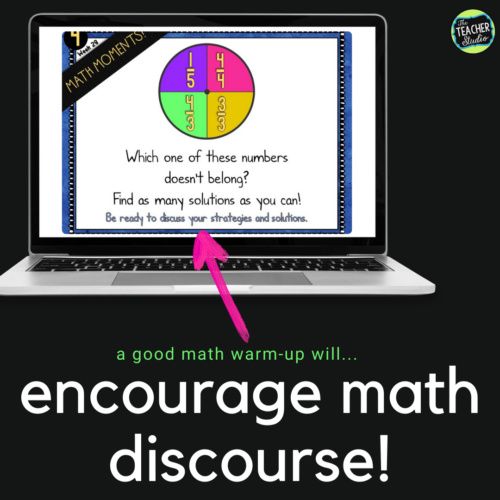Routines are an essential part of effective mathematics classrooms because they give structure to time and interactions. Students crave structure, and giving students clarity in terms of participation expectations and measures of success is one of the most powerful things we can do as teachers.
Instructional routines are specific, repeatable activities or tasks that support both the teacher and students in the classroom. They give all students the opportunity to engage more fully in learning opportunities while building crucial mathematical thinking habits. (Kelemanik, Lucenta, & Creighton, 2016).
A well-designed instructional routine in math opens up math dialogue and deep thinking about mathematics that might not happen without these structures in place. (McCallum & Nowak, 2018). Math warm up activities are a great way to accomplish this!
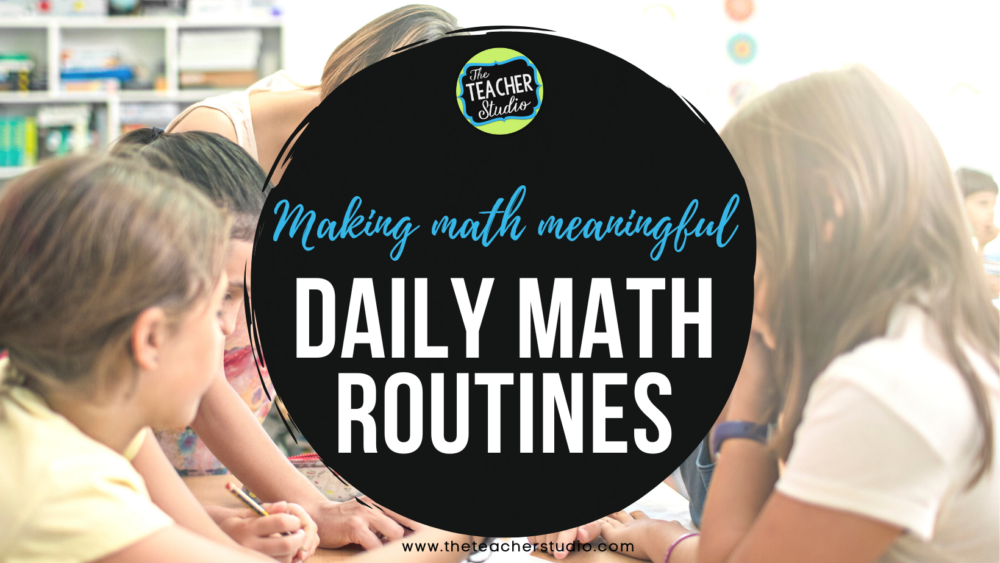
The benefits of spiral math review tasks
When we think about “traditional” math instruction that simply moves chapter by chapter, topic by topic. The challenges of this more traditional math instruction include:
- Students often struggle to understand new concepts if they aren’t linked to previous learning.
- They may forget what they have learned in previous units.
- They may become discouraged and frustrated as the material gets more and more challenging.
Instead, giving students a math routine at the beginning of each class that is familiar in format and has a spiral math review component can be so powerful. When planning MY warm up tasks, I want to make sure I don’t have to waste time explaining the procedures, so I stick to a few tried-and-true tasks. The students know what to do and can focus on the content and the math talk! I’ll give you just a few examples.
Spiral Math Review Ideas
First, check out the perks of THIS type of problem. Students learn to focus on the directions. In this case–HOW MANY. One solution is just the beginning! You can also see that there are no WRONG answers, just tons of practice multiplying. The power comes in the discussion of strategies and how students made their decision. I love these tasks because all students have access to the math. Some students may only find a few solutions while other find many and can even work to organize their thinking.
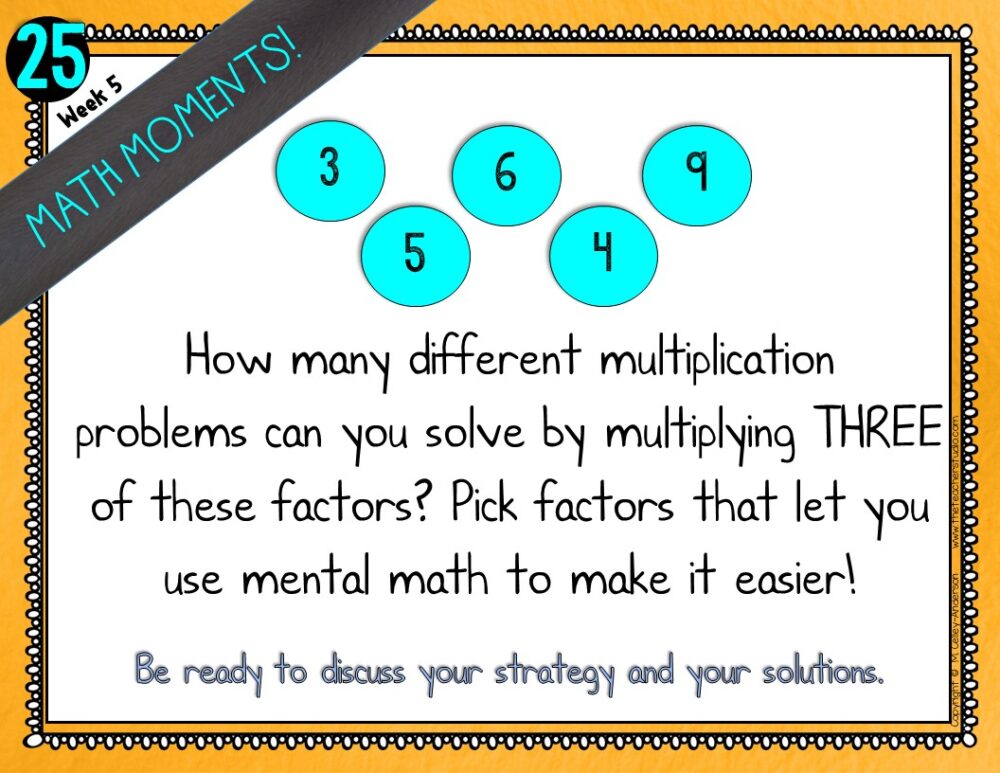
This is a similar task. My students learn to look for the words “write a list” and know what that means. Again, the discussion of strategies is key.
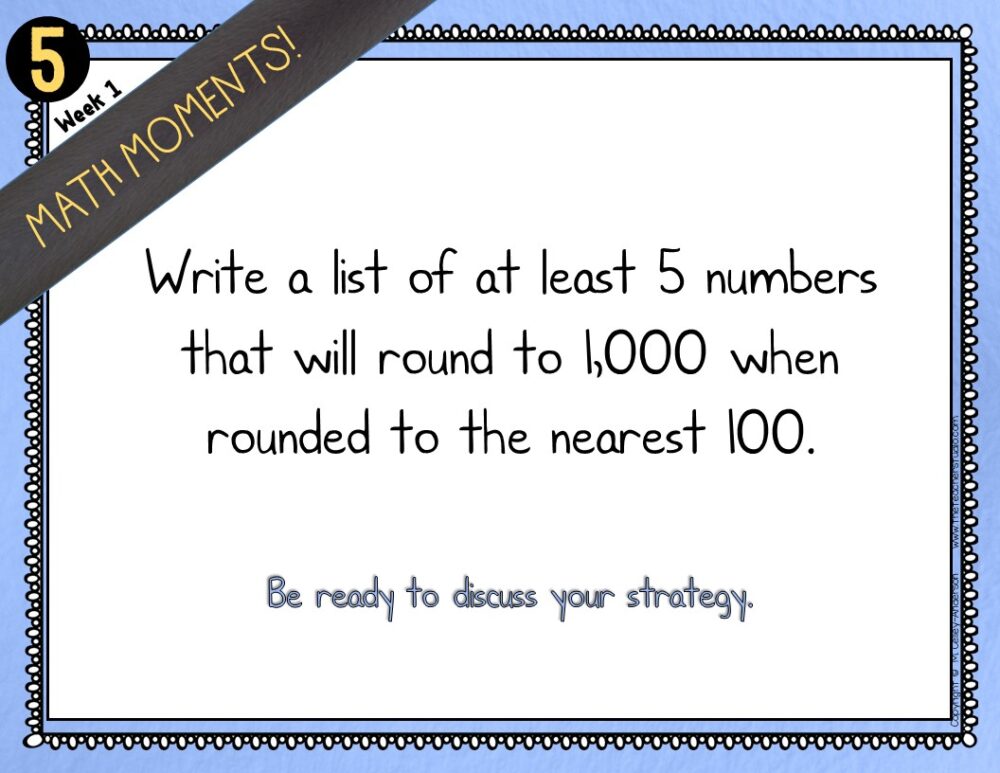
One of my students’ FAVORITE math routines is “Which one doesn’t belong?”. I use one of these every few weeks and we have the BEST discussions. These are great for working on academic vocabulary which can easily fade over time if you don’t spiral your review. From geometry to decimals–we use this format all the time, and as soon as my students see that rainbow circle, they know what to expect. Again, one answer won’t do it–and the explanation is key.
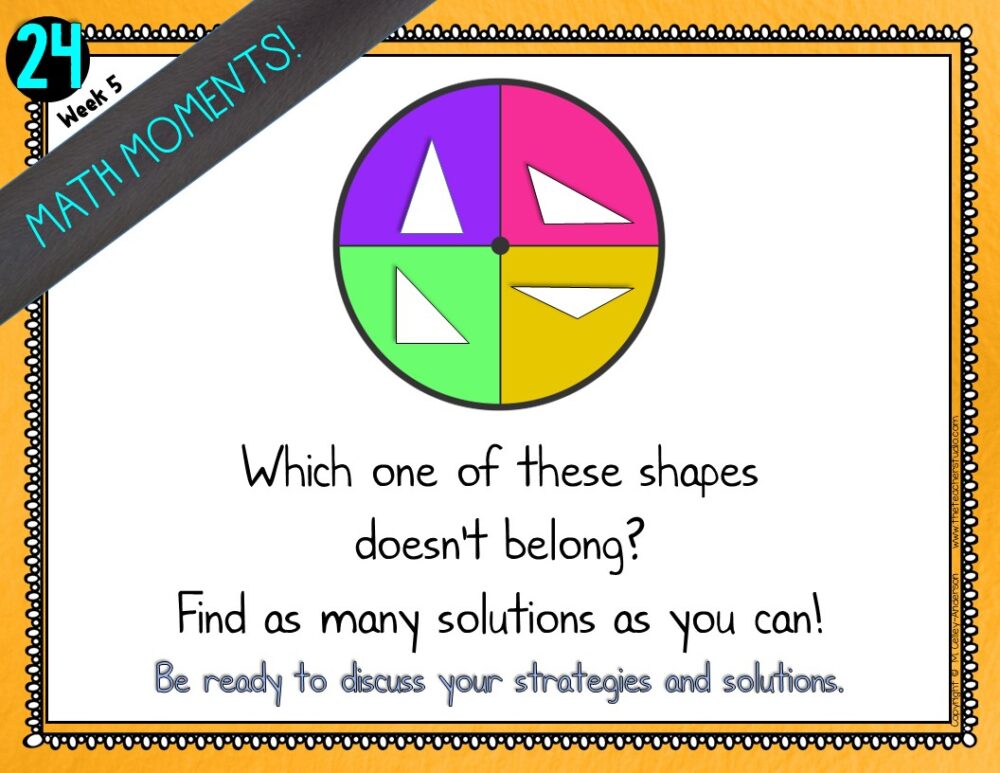
I’ll show you one more–although we do a number of other problem types as well.
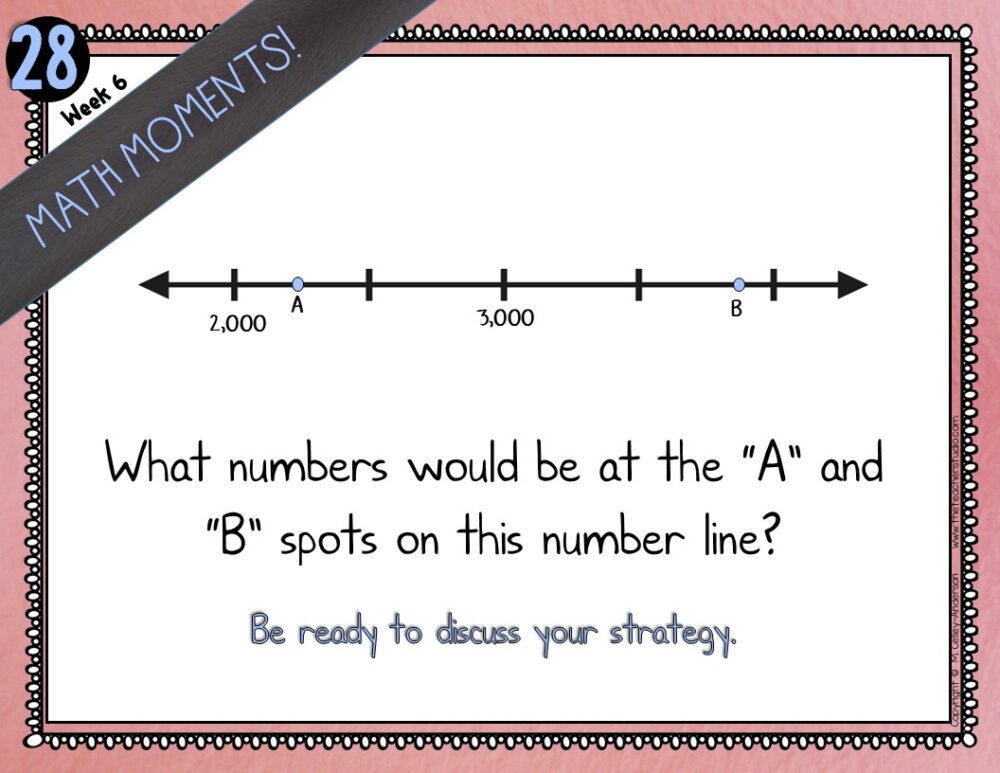
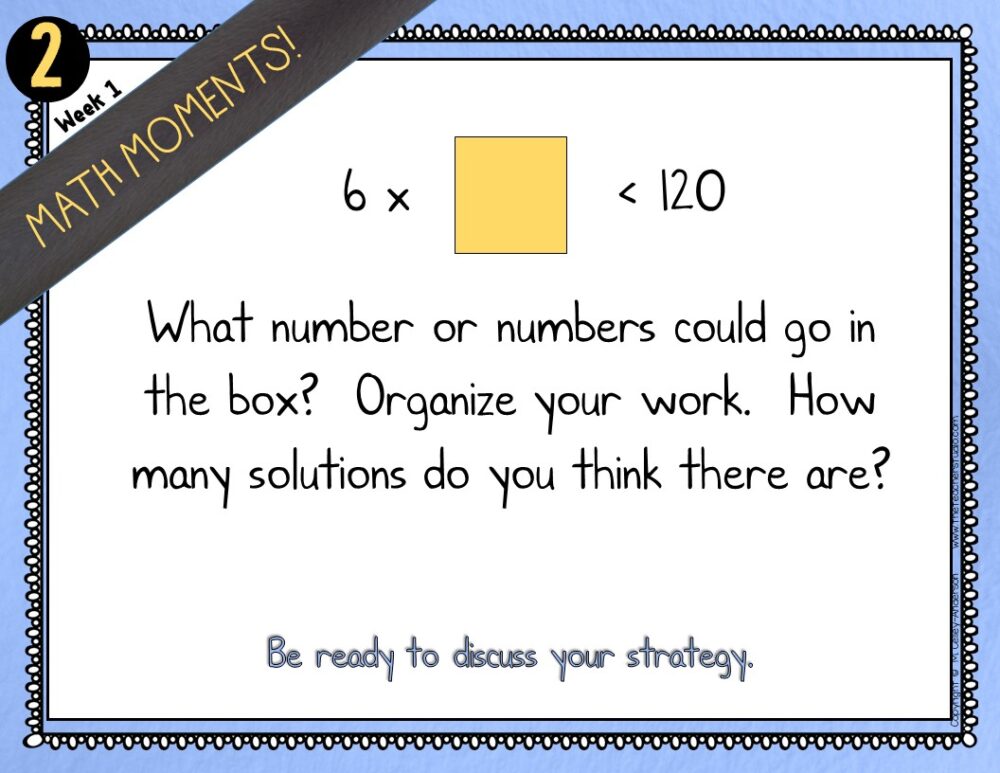
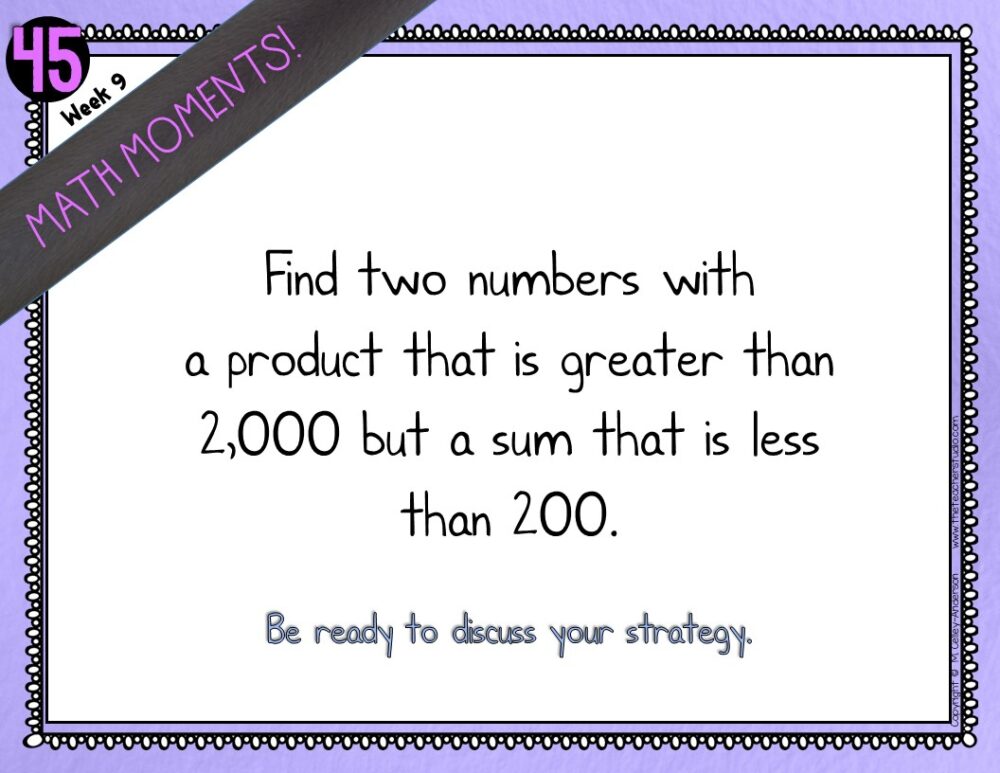
Why use daily math warm-ups?
Daily math warm-ups can help students develop fluency and automaticity.
Fluency is the ability to perform a task quickly and accurately without much thought. Automaticity is the ability to do something without having to consciously think about it. Both fluency and automaticity are important for math success, as they allow students to focus on the more challenging aspects of a problem.
Daily math warm-ups can help students build conceptual understanding.
Conceptual understanding is the ability to understand the underlying principles behind a mathematical concept. This is important for math success, as it allows students to generalize their knowledge to new situations.
Daily math warm-ups can help students develop problem-solving skills.
Problem-solving skills are essential for success in math and in life. Daily math warm-ups can help students develop these skills by providing them with opportunities to practice solving problems in a variety of contexts. Remember, problem solving does not necessarily mean word problems (although it might!). Problem solving simply means that students need to think, choose strategies, and make sense of a math situation, not merely compute.
Daily math warm-ups can help students develop positive attitudes toward math.
When students are successful in math, they are more likely to develop positive attitudes toward it. Daily math warm-ups can help students be successful by providing them with opportunities to practice and improve their skills. When you “spiral” your math review, it provides multiple teaching opportunities AND multiple opportunities to notice when students struggle. This is a window into their understanding and a chance for you to coach.
What else?
- These tasks get students’ brains ready for learning. Just like athletes warm up their bodies before a workout, students can warm up their brains before a math lesson. This can help them focus and be more attentive.
- They review previously learned material. Daily math warm-ups can be a great way to review previously learned material. This can help students solidify their understanding of concepts and skills.
- Daily tasks help teachers identify areas of weakness. If students struggle with a particular math concept or skill, daily math warm-ups can help them identify this early on. This allows teachers to provide targeted instruction and support.
A few more tips!
- Make math warm ups short and engaging. Students should be able to complete the warm-up in 5-10 minutes.
- Vary the types of activities. Use a variety of activities to keep students engaged, such as problems, puzzles, games, and challenges.
- Make them relevant to your standards. The warm-up should be related to the concepts that students are currently learning or provide key practice opportunities for previously taught topics.
- Use a variety of levels of difficulty. This is a great opportunity for students to work collaboratively and to share ideas and thinking.
- Provide feedback. Give students feedback on their work so they can learn from their mistakes and improve their skills.
Overall, there is a lot of research to support the use of daily math warm-ups. They can be a valuable tool for helping students develop fluency, automaticity, conceptual understanding, problem-solving skills, and positive attitudes toward math.
Give it a try!
So dig through your curriculum and get creative! See how you can help your students build these daily routines. Of course, if you are busy and want some help, I’ve got you covered!
See below for yearly bundles (individual sets available too!) of warm ups for grades 3, 4, and 5–totally standards-based and ready to use. They can be printed or used digitally…whatever works. The work is done and you can just get started! See what you think.
SHOP FOR READY-TO-USE WARM UPS BELOW!





